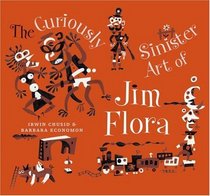Search -
The Curiously Sinister Art of Jim Flora
The Curiously Sinister Art of Jim Flora
Author:
A new collection of eye-popping rarities from a defining visual stylist of the 1950s jazz era. — The Curiously Sinister Art of Jim Flora, following hot on the heels of 2004's The Mischievous Art of Jim Flora (which sold out within a matter of months, but which is being reprinted with this latest volume of Floriana) features a... more »
Author:
A new collection of eye-popping rarities from a defining visual stylist of the 1950s jazz era. — The Curiously Sinister Art of Jim Flora, following hot on the heels of 2004's The Mischievous Art of Jim Flora (which sold out within a matter of months, but which is being reprinted with this latest volume of Floriana) features a... more »
ISBN-13: 9781560978053
ISBN-10: 1560978058
Publication Date: 2/26/2007
Pages: 164
Rating: ?
ISBN-10: 1560978058
Publication Date: 2/26/2007
Pages: 164
Rating: ?
0 stars, based on 0 rating
Genres:
- Arts & Photography >> Individual Artists >> General
- Arts & Photography >> Graphic Design >> Commercial >> General
- Arts & Photography >> Graphic Design >> Commercial >> Illustration
- Arts & Photography >> Graphic Design >> Techniques >> General
- Arts & Photography >> Art >> Instruction & Reference >> General
- Arts & Photography >> Art >> General
- Biographies & Memoirs >> Arts & Literature >> Artists, Architects & Photographers
- Humor & Entertainment >> Music >> Musical Genres >> Popular
- Comics & Graphic Novels >> General




